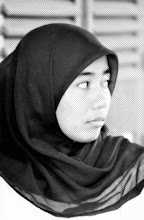Early life and education
Finlay was born Juan Carlos Finlay y Barres, in Puerto Príncipe (now Camagüey), Cuba, of French and Scottish descent. He reversed the order of his given names to "Carlos Juan" later in his life. In 1853 he attended Jefferson Medical College in Philadelphia,Pennsylvania. He graduated in 1855, and completed his studies in Havana and in Paris. Afterwards he settled in Havana and opened a medical practice.
For twenty years of his professional life, renowned Cuban physician and scientist Carlos J. Finlay stood at the center of a vigorously debated medical controversy. The etiology of yellow fever -- its causes and origins -- had puzzled medical practitioners since the earliest recorded cases of the disease in the fifteenth and sixteenth centuries. Periodic epidemics of yellow fever ravaged the population of Finlay's native Cuba, particularly affecting the citizens of Havana, where he set up a medical practice in 1864. Finlay was intensely interested in epidemiology and public health, and his initial work on cholera -- the result of a severe outbreak of the disease in Havana in 1867 -- challenged the received wisdom of medical authorities.
His conclusion that the disease was waterborne, though later verified, was rejected by publishers at the time. Finlay soon afterwards began research on yellow fever, publishing his first paper on it in 1872. Here the same keen observations and logical deductions which informed his analysis of cholera lead him to propose in 1881 that the Culex mosquito be "hypothetically considered as the agent of transmission of yellow fever." This time the paper was published, but the wide professional circulation of The Annals of the Academy of Medical, Physical, and Natural Sciences of Havana did not assure Finlay of widespread support. Indeed, only one other Cuban physician, Claudio Delgado, rallied to Finlay's side in those early years.
Professional career
Finlay's work, carried out during the 1870s, finally came to prominence in 1900. He was the first to theorize, in 1881, that a mosquito was a carrier, now known as a disease vector, of the organism causing yellow fever: a mosquito that bites a victim of the disease could subsequently bite and thereby infect a healthy person. A year later Finlay identified a mosquito of the genus Aedes as the organism transmitting yellow fever. His theory was followed by the recommendation to control the mosquito population as a way to control the spread of the disease.
His hypothesis and exhaustive proofs were confirmed nearly twenty years later by the Walter Reed Commission of 1900. Finlay went on to become the chief health officer of Cuba from 1902 to 1909. Although Dr. Reed received much of the credit in history books for "beating" yellow fever, Reed himself credited Dr. Finlay with the discovery of the yellow fever vector, and thus how it might be controlled. Dr. Reed often cited Finlay's papers in his own articles and gave him credit for the discovery in his personal correspondence.
In the words of General Leonard Wood, a physician and U.S. military governor of Cuba in 1900: "The confirmation of Dr. Finlay's doctrine is the greatest step forward made in medical science since Jenner's discovery of the vaccination [for smallpox]."
This discovery helped William C. Gorgas reduce the incidence and prevalence of mosquito-borne diseases in Panama during the American campaign from 1903 onwards to construct the Panama Canal. Prior to this, about 10% of the workforce died each year from malaria and yellow fever.




Tidak ada komentar:
Posting Komentar